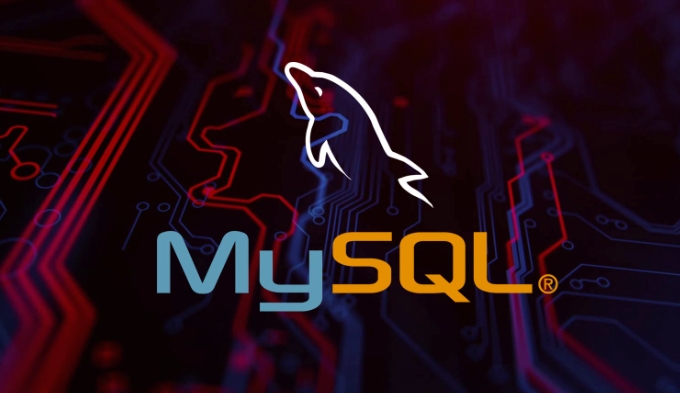mysql tutorial on subqueries vs joins
Jun 29, 2025 am 12:58 AMThe applicable scenarios of subquery and connection are different, and performance depends on the specific situation. 1. Subqueries are suitable for queries with clear logic and simple structure, especially in single-value matching or aggregation scenarios; 2. Connections are more suitable for scenarios where multiple rows of result matching or multiple table fields are obtained simultaneously, and are usually more efficient when processing large amounts of data; 3. In actual use, indexes, query structures and requirements should be combined, and execution plans should be analyzed through EXPLAIN to optimize performance.

If you are just starting to get involved in MySQL query optimization, you may be confused with a question: Is it better to use subqueries or joins? In fact, there is no absolute answer. The key is to understand their respective applicable scenarios and performance performance.

What are subqueries and connections?
A subquery is to nest another query in a SELECT, FROM, or WHERE clause. It is usually used to get data from one table and then search in another table based on this data.

Joining combines data by associating columns of two or more tables. The most common ones are INNER JOIN and LEFT JOIN.
To give a simple example:

-- Subquery writing SELECT name FROM users WHERE id IN (SELECT user_id FROM orders WHERE amount > 100); -- JOIN Writing SELECT u.name FROM users u JOIN orders o ON u.id = o.user_id WHERE o.amount > 100;
The results of these two statements may be the same, but they are executed in different ways.
Which writing method is more efficient?
This problem is very common. Many people think that JOIN must be faster than subquery, but it is not necessarily true. MySQL will automatically optimize subqueries in some cases, converting them into JOIN.
But generally speaking:
- If you only need a small amount of data and subqueries can use indexes, then subqueries are not very efficient.
- If you are dealing with large amounts of data, or need multi-layer nested queries, JOIN is often more efficient because it is designed specifically to merge data sets.
Some practical experience:
- Subqueries may be faster when single values ??match.
- JOIN is more suitable when multiple row results match.
- Using EXISTS to replace IN may have performance improvements, especially on large tables.
When should I use sub-query?
Subqueries are more suitable for queries with clear logic and simple structure. For example, if you want to find users whose order amount is greater than the average, it is very intuitive to use sub-queries:
SELECT name FROM users
WHERE id IN (
SELECT user_id FROM orders
WHERE amount > (SELECT AVG(amount) FROM orders)
);Although this writing method can also be implemented with JOIN, the structure will be much more complicated. So when readability is more important, subqueries are a good choice.
In addition, subquery is also very convenient in some aggregation scenarios. For example, if you want to check the latest order information of each user, you can use subquery to cooperate with GROUP BY:
SELECT u.name, (
SELECT o.amount
FROM orders o
WHERE o.user_id = u.id
ORDER BY o.created_at DESC
LIMIT 1
) AS last_order_amount
FROM users u;When should JOIN be prioritized?
JOIN is more suitable when you need to get fields in multiple tables at the same time, or if you need to reference data from other tables multiple times.
For example, counting the order quantity and total amount of each user:
SELECT u.name, COUNT(o.id) AS order_count, SUM(o.amount) AS total_amount FROM users u LEFT JOIN orders o ON u.id = o.user_id GROUP BY u.id;
This writing method is much simpler and easier to maintain than using subqueries. Moreover, LEFT JOIN can retain users without orders, which is difficult to implement in subquery.
Tips: Don't forget to see the execution plan of EXPLAIN
Whether writing subqueries or JOINs, you must develop the habit of using EXPLAIN to analyze execution plans. Check whether there are indexes and full table scans, so that you can know whether your query is fast or not.
You can add a few common conditions to try:
- Add index to user_id
- Change the subquery to EXISTS form
- Change the JOIN type (such as LEFT vs INNER)
Basically that's it. Master the differences and usage scenarios between the two. The written SQL can not only run fast, but also be easy to understand and maintain.
The above is the detailed content of mysql tutorial on subqueries vs joins. For more information, please follow other related articles on the PHP Chinese website!

Hot AI Tools

Undress AI Tool
Undress images for free

Undresser.AI Undress
AI-powered app for creating realistic nude photos

AI Clothes Remover
Online AI tool for removing clothes from photos.

Clothoff.io
AI clothes remover

Video Face Swap
Swap faces in any video effortlessly with our completely free AI face swap tool!

Hot Article

Hot Tools

Notepad++7.3.1
Easy-to-use and free code editor

SublimeText3 Chinese version
Chinese version, very easy to use

Zend Studio 13.0.1
Powerful PHP integrated development environment

Dreamweaver CS6
Visual web development tools

SublimeText3 Mac version
God-level code editing software (SublimeText3)

Hot Topics
 What is GTID (Global Transaction Identifier) and what are its advantages?
Jun 19, 2025 am 01:03 AM
What is GTID (Global Transaction Identifier) and what are its advantages?
Jun 19, 2025 am 01:03 AM
GTID (Global Transaction Identifier) ??solves the complexity of replication and failover in MySQL databases by assigning a unique identity to each transaction. 1. It simplifies replication management, automatically handles log files and locations, allowing slave servers to request transactions based on the last executed GTID. 2. Ensure consistency across servers, ensure that each transaction is applied only once on each server, and avoid data inconsistency. 3. Improve troubleshooting efficiency. GTID includes server UUID and serial number, which is convenient for tracking transaction flow and accurately locate problems. These three core advantages make MySQL replication more robust and easy to manage, significantly improving system reliability and data integrity.
 What is a typical process for MySQL master failover?
Jun 19, 2025 am 01:06 AM
What is a typical process for MySQL master failover?
Jun 19, 2025 am 01:06 AM
MySQL main library failover mainly includes four steps. 1. Fault detection: Regularly check the main library process, connection status and simple query to determine whether it is downtime, set up a retry mechanism to avoid misjudgment, and can use tools such as MHA, Orchestrator or Keepalived to assist in detection; 2. Select the new main library: select the most suitable slave library to replace it according to the data synchronization progress (Seconds_Behind_Master), binlog data integrity, network delay and load conditions, and perform data compensation or manual intervention if necessary; 3. Switch topology: Point other slave libraries to the new master library, execute RESETMASTER or enable GTID, update the VIP, DNS or proxy configuration to
 How to connect to a MySQL database using the command line?
Jun 19, 2025 am 01:05 AM
How to connect to a MySQL database using the command line?
Jun 19, 2025 am 01:05 AM
The steps to connect to the MySQL database are as follows: 1. Use the basic command format mysql-u username-p-h host address to connect, enter the username and password to log in; 2. If you need to directly enter the specified database, you can add the database name after the command, such as mysql-uroot-pmyproject; 3. If the port is not the default 3306, you need to add the -P parameter to specify the port number, such as mysql-uroot-p-h192.168.1.100-P3307; In addition, if you encounter a password error, you can re-enter it. If the connection fails, check the network, firewall or permission settings. If the client is missing, you can install mysql-client on Linux through the package manager. Master these commands
 Why do indexes improve MySQL query speed?
Jun 19, 2025 am 01:05 AM
Why do indexes improve MySQL query speed?
Jun 19, 2025 am 01:05 AM
IndexesinMySQLimprovequeryspeedbyenablingfasterdataretrieval.1.Theyreducedatascanned,allowingMySQLtoquicklylocaterelevantrowsinWHEREorORDERBYclauses,especiallyimportantforlargeorfrequentlyqueriedtables.2.Theyspeedupjoinsandsorting,makingJOINoperation
 Why is InnoDB the recommended storage engine now?
Jun 17, 2025 am 09:18 AM
Why is InnoDB the recommended storage engine now?
Jun 17, 2025 am 09:18 AM
InnoDB is MySQL's default storage engine because it outperforms other engines such as MyISAM in terms of reliability, concurrency performance and crash recovery. 1. It supports transaction processing, follows ACID principles, ensures data integrity, and is suitable for key data scenarios such as financial records or user accounts; 2. It adopts row-level locks instead of table-level locks to improve performance and throughput in high concurrent write environments; 3. It has a crash recovery mechanism and automatic repair function, and supports foreign key constraints to ensure data consistency and reference integrity, and prevent isolated records and data inconsistencies.
 What are the transaction isolation levels in MySQL, and which is the default?
Jun 23, 2025 pm 03:05 PM
What are the transaction isolation levels in MySQL, and which is the default?
Jun 23, 2025 pm 03:05 PM
MySQL's default transaction isolation level is RepeatableRead, which prevents dirty reads and non-repeatable reads through MVCC and gap locks, and avoids phantom reading in most cases; other major levels include read uncommitted (ReadUncommitted), allowing dirty reads but the fastest performance, 1. Read Committed (ReadCommitted) ensures that the submitted data is read but may encounter non-repeatable reads and phantom readings, 2. RepeatableRead default level ensures that multiple reads within the transaction are consistent, 3. Serialization (Serializable) the highest level, prevents other transactions from modifying data through locks, ensuring data integrity but sacrificing performance;
 What are the ACID properties of a MySQL transaction?
Jun 20, 2025 am 01:06 AM
What are the ACID properties of a MySQL transaction?
Jun 20, 2025 am 01:06 AM
MySQL transactions follow ACID characteristics to ensure the reliability and consistency of database transactions. First, atomicity ensures that transactions are executed as an indivisible whole, either all succeed or all fail to roll back. For example, withdrawals and deposits must be completed or not occur at the same time in the transfer operation; second, consistency ensures that transactions transition the database from one valid state to another, and maintains the correct data logic through mechanisms such as constraints and triggers; third, isolation controls the visibility of multiple transactions when concurrent execution, prevents dirty reading, non-repeatable reading and fantasy reading. MySQL supports ReadUncommitted and ReadCommi.
 How to add the MySQL bin directory to the system PATH
Jul 01, 2025 am 01:39 AM
How to add the MySQL bin directory to the system PATH
Jul 01, 2025 am 01:39 AM
To add MySQL's bin directory to the system PATH, it needs to be configured according to the different operating systems. 1. Windows system: Find the bin folder in the MySQL installation directory (the default path is usually C:\ProgramFiles\MySQL\MySQLServerX.X\bin), right-click "This Computer" → "Properties" → "Advanced System Settings" → "Environment Variables", select Path in "System Variables" and edit it, add the MySQLbin path, save it and restart the command prompt and enter mysql--version verification; 2.macOS and Linux systems: Bash users edit ~/.bashrc or ~/.bash_






